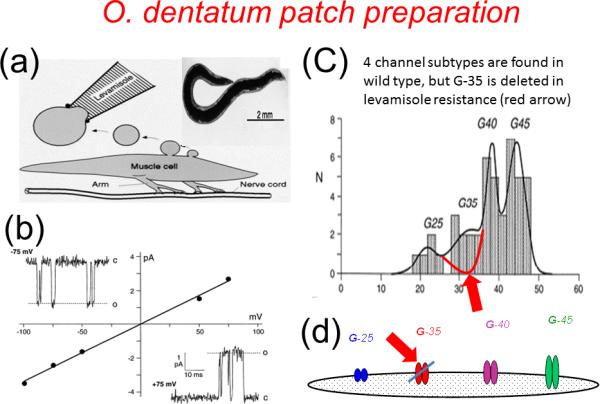Figure 1.

AChR single-channel currents from Oesophagostomum dentatum using the patch-clamp technique [4,43]. (a) Diagram of the production of the membrane vesicles and patch-pipette used to record the levamisole activated AChR channel currents; (inset) adult female O. dentatum. (b) Examples of levamisole activated channel currents recorded at -75mV and +75mV patch potentials and the current voltage plot showing a linear relationship, zero reversal potential, and slope giving a channel conductance of 42 pS. (c) Channel conductance distribution for the anthelmintic sensitive isolate (wild type) showing the four peaks (fitted using the sum of 4 normal distributions). The peaks illustrate the presence of four subtypes present: G25 pS, G35 pS, G40 pS and G45 pS. In the levamisole-resistant (LEVR) isolate there were only three subtypes present because the G35 pS subtype was missing. In the pyrantel resistant isolate, the four G subtypes were present and included the G 35 pS subtype, but there were fewer channels present in the muscle compared with the anthelmintic sensitive (wild) isolate. (d) Diagram of the different channel subtypes detected and presented by size on a basis of the conductances in O. dentatum; G 35 pS is not present in in levamisole resistant isolates, but present in pyrantel isolates.
